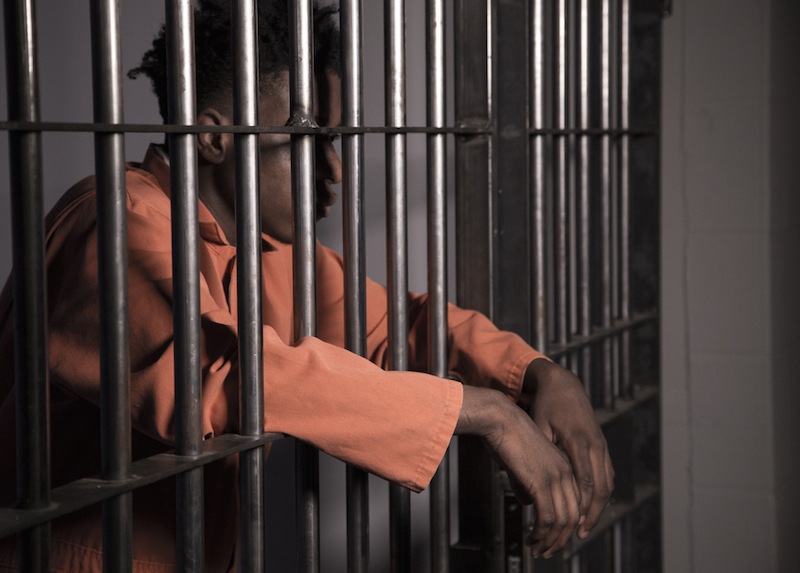Cultures
Do our prisons run on slave labor?

Image: Shutterstock/Skyward Kick Productions
America incarcerates more people per capita per year than any other country in the world. For every 100,000 Americans, roughly 478 are incarcerated at any given moment.
It’s a rate that dwarfs that of other similarly developed countries. Our neighbor to the north, Canada, incarcerates people at a rate that is less than half that of the United States, as does much of western Europe.
It has been said that though the US has less than 5% of the world’s population, it has almost 25% of its prisoners.
Many explanations have been given for this shocking statistic. The most compelling seems to be that while America has roughly the same rate of crime as many other countries, it is far more willing to send offenders to jail. Politicians call this being “tough on crime.”
It is an idea that the American people have widely embraced and, as a result, any attempt to reform America’s prisons is an uphill struggle. We seem to either explicitly or implicitly believe that a prisoner deserves any ill treatment they receive in prison. The comments section on any internet article detailing a prominent criminal is full of people expressing their desire that the criminal be raped in prison and others calling for their murder.
Our courts do not sentence people to be raped or murdered, and they do not sentence them to slavery, yet too often these are the outcomes that prisoners can expect, and the public seems fairly content with that fact.
This may explain why we are also content to allow prisoners to endure deplorable conditions in many prisons around the country.
This month marked the anniversary of the Attica Prison riot, which while a horrible tragedy, has long served as a call for resistance against unfair conditions. This year, the event is being commemorated with the largest prison strike in US history.
Prisoners all over the country have been refusing to report to jobs that many of them argue is akin to slave labor. Though information is slow to leak out from inside the prisons, estimates run as high as 20,000 prisoners participating.
Though many such protests have been peaceful, focused on civil disobedience and hunger strikes, some prisoners have been engaged in more disruptive protests involving the destruction of prison property.
Prison officials have been reluctant to acknowledge the very existence of the strike, and the majority of information has come from organizers on the outside. Many have complained about the lack of interest displayed by the mainstream media, which has largely allowed the strike to go unreported.
Particularly troubling to organizers is the fact that accounts of brutality in the suppression of the strike have gone uncovered.
Labor has long been a fact of life within America’s prisons, dating back all the way to the founding of the modern prison movement when organized labor was seen as an avenue to reform.
Later prisons became a reliable source of cheap labor for State Governments, who chained road crews of prisoners together in the famous “chain-gangs.” And even in the current era, prison labor has been a fairly integral part of the American penal system.
Many Americans are unaware of the fact that prisoners in this country are often required to work long shifts at all manner of jobs for wages that effectively amount to pennies an hour.
Though the labor is ostensibly voluntary, many prisoners report that retaliation against those who refuse to work are harsh, effectively meaning that they are required to work for these wages.
It’s a system that persists in the face of opposition, largely due to how profitable it is. Many private companies in America directly benefit from the labor of prison inmates, from Walmart to Whole Foods who get their goods and materials from prisoners making less than a dollar an hour.
Some have pointed out that this system of forcing people to work for extremely low wages effectively amounts to slavery, though prisons have long argued that this is a false comparison.
Either way, the ongoing strike has managed to shed a bit of light on these practices, though largely not enough. It sets a dangerous precedent to ignore this peaceful strike and only cover the most violent ones like Attica.
If only violent strikes receive attention, then prisoners will only strike violently when trying to call attention to the slavery in America’s prisons.





0 comments